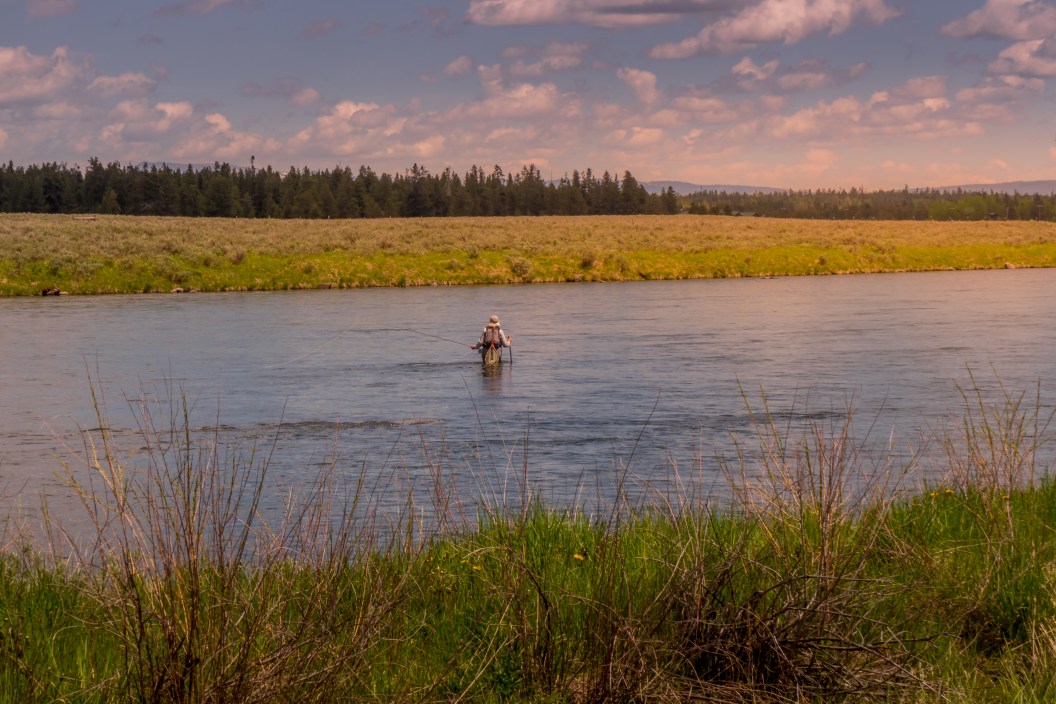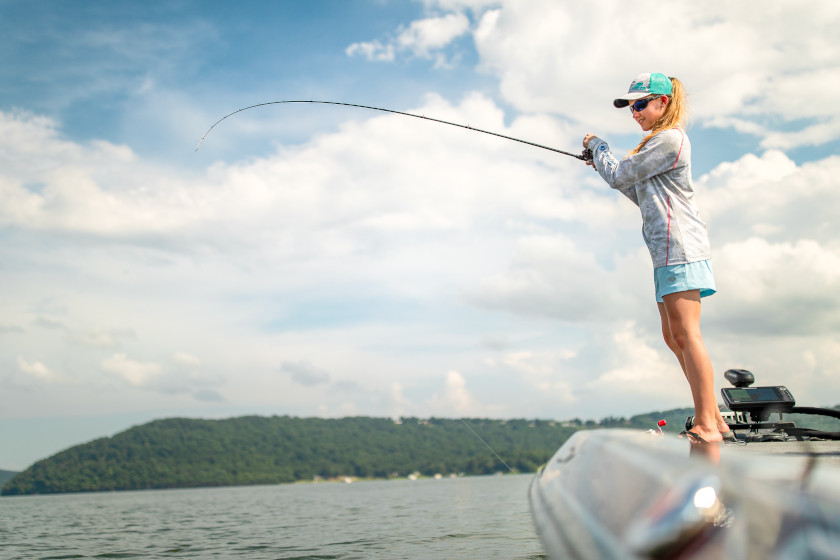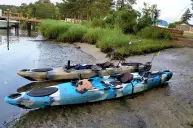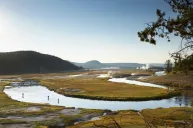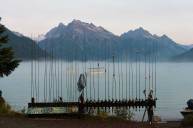The joy of fishing can be drained quickly when it's overshadowed with loud crowds, tangled lines, no space, and lots of fishing pressure from fellow anglers. Peak fishing seasons often mean that favorite spots are overcrowded with other people who are also trying to enjoy the sport.
Now picture this: untouched water, lots of elbow room, and only the sounds of nature to serenade your ears.
With a little work and sometimes a bit of money, anglers can indeed find that peace and solitude they crave. So, breathe deep, make a plan, get out there, and then enjoy those wide-open spaces.
READ MORE: How to Record, Remember, and Maybe Even Hide Your Best Fishing Spots
1. Hit the Backcountry

Getty Images, lightasafeather
The hardest places to reach often have the best angling. Backcountry fishing is an entirely different kind of beast. This style is more common with trout fishing—but, basically, you're going to be hiking to a remote lake or stream for some big fish. Generally, the farther you hike, the better the odds you'll find lower fishing pressure and a quieter setting.
This is a great option if you also love to camp. Pick your favorite state park and find the most remote trail/camping area you can. If you can find a spot that requires permits, that's even better—it means only a select few people will be allowed to go in at any given time, and it weeds out the less-dedicated.
There might be one dynamite brook trout stream at the end of the trail and that's it. But it's a great option for fly anglers, because some of the best fly fishing streams for brown trout and rainbow trout are already in extremely remote locations. If you're struggling to find a place, ask at the local fly shop, and they will generally be able to point you in the right direction.
2. Go Fishing On a Weekday
This may seem like an obvious solution, but you'd be surprised how many anglers never think to try fishing something other than the weekends. It is totally worth expending a few vacation days during prime fishing season to get away from the crowds. Keep in mind that some lakes are always going to be busy.
Famous fisheries such as Lake Okeechobee, Lake Fork, or Lake Castaic see fishermen all week long. About the only way to combat the crowds there is to try nonseasonal times before or after a spawn. The big lakes may be busy, but smaller, lesser-known fishing holes are often all but empty during the week, especially on a Monday or Tuesday.
2. Try Canoe or Kayak Fishing

Getty/jjshaw14
Some of the best fishing waters in the world are completely closed to all gas or electric traffic, such as the Boundary Waters Canoe Area in Minnesota. In the Boundary Waters, permits are doled out only to enter certain areas, which limits human presence extensively. Campers and anglers can literally go for days without ever seeing another person.
Fishing from a kayak or canoe opens up a lot of possibilities for lakes that are far off the beaten path with no public access ramps. There may be a dynamite bass lake in the middle of a national forest, but it's a 12-mile hike to get there. Sometimes, anglers can reach spots like this much faster with a canoe or kayak.
The shallow draft also means you can get in nearly every little pocket and stream that is filtering into a larger body of water. Sometimes, these streams can lead to lakes no one else can access. If you're lucky, you'll come across a hidden pocket where the fish have never seen a lure before.
4. Find Secret Spots on Google Maps
Google Maps is an incredible fishing tool that is not used by many anglers. Google's satellite views can show all sorts of hidden lakes and rivers. One way to find hidden spots is to simply follow rivers on Google Maps and note where the rivers cross roadways. Look for roads near bends and curves that create deep pockets that can hold largemouth bass, smallmouth bass, bluegill, and catfish.
This method can be hit or miss. Some locations look good on satellite but don't pan out upon arrival. Make sure you check the Google street view of the spot if it is available for that location. This can help you weed out some spots immediately. A hack is to combine this method with taking along a kayak. Sometimes, a roadside spot will be busy with bank anglers. No problem: Take the kayak a quarter-mile downstream to where no one else is fishing.
5. Plan a Fly-In Fishing Trip

Getty Images: Uwe Bergwitz
Although not the cheapest or easiest option on this list, a fly-in fishing trip is nearly guaranteed to get you away from the crowds. This is a popular method in Canada, where there are tons of remote lakes that can only be reached by pontoon airplane. Most of these lakes have cabins or cottage accommodations and boats ready when you get there. All you need to bring is your fishing gear.
Find the right outfitter, and you could have an entire lake in the wilderness to yourself. The downside is that these trips can be a bit pricey. You're looking at around $700-$2,000, depending on the trip length and the number of people going along. If you can wrangle a few friends together, the costs go down significantly. These trips mostly target pike, muskie, walleye, and bass.
Alaskan fly-in trips are another great option. These trips tend to target salmon. This type of fishing trip is great if you are into catch-and-cooks. In fact, the whole point of most of these trips is just that—to catch your dinner every night and then sit back with friends and have some laughs over some cold ones around the campfire under the northern lights.
READ MORE: How to Match Yourself With the Perfect International Fishing Trip
